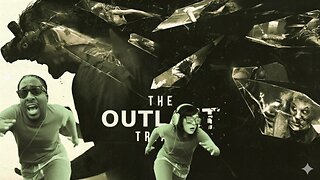Premium Only Content
!['Green Mars' (1994) by Kim Stanley Robinson [Part 3 of 3]](https://1a-1791.com/video/fww1/15/s8/1/A/-/h/t/A-htz.qR4e-small-Green-Mars-1994-by-Kim-Stan.jpg)
'Green Mars' (1994) by Kim Stanley Robinson [Part 3 of 3]
Kim Stanley Robinson’s 'Green Mars' (1994), the second volume of his monumental Mars Trilogy, is both a continuation and deepening of the vast project begun in Red Mars. Where Red Mars chronicled the daring, often violent birth of human settlement on the Red Planet — the breaking of ground, both literal and ideological — 'Green Mars' is the story of growth: political, ecological, and emotional. It explores how new societies, like new ecosystems, must evolve, adapt, and find equilibrium. If Red Mars was about revolution and the struggle for survival, 'Green Mars' is about the long, difficult work of creation — the building of a civilization that might endure.
The novel opens in the aftermath of the failed revolution that ended Red Mars. The Martian colonists have scattered — some gone underground, others compromised by Earth’s growing corporate dominance. Meanwhile, the planet itself is slowly changing. Terraforming efforts have begun to take effect: the atmosphere thickens, ice caps melt, and the first hints of green — lichen, moss, and genetically engineered plants — begin to spread across the once-barren surface. The title thus functions as both a literal description of Mars’s changing color and a metaphor for emergent life and renewal, human and ecological alike.
The story’s focal point shifts to a new generation: the children born on Mars, unburdened by Earth’s memory and politics. Through their eyes, Robinson examines the development of a distinctly Martian identity — a culture no longer defined by exile or rebellion, but by belonging. These “native Martians” experience the planet not as a frontier to conquer but as home, and their struggle becomes one of self-determination: how to define freedom and community on their own terms.
Central to the narrative is Nirgal, the son of the earlier colonists Hiroko Ai and Coyote, whose coming-of-age parallels the planet’s transformation. His journey from isolation to leadership — from observing the world’s changes to helping shape them — embodies the novel’s theme of growth through interconnection. As Nirgal learns to understand the rhythms of Mars, he also learns that identity and politics are ecological phenomena: balance, diversity, and resilience are essential to both. Robinson uses Nirgal’s personal arc to show how maturity, whether planetary or human, requires patience and cooperation rather than conquest.
Politically, 'Green Mars' expands on the ideological conflicts of Red Mars but with greater subtlety. The earlier novel’s stark oppositions — Reds versus Greens, preservation versus transformation — give way to a more nuanced vision of coexistence. As the colonists attempt to form a new Martian constitution, Robinson stages a vast, deliberative drama of governance, exploring questions of federalism, representation, and environmental ethics. The political debates — detailed, intricate, sometimes sprawling — mirror the complexities of real-world democratic experimentation. Robinson’s genius lies in his insistence that politics, like ecology, is an evolving system: messy, adaptive, and always incomplete.
At the same time, Robinson deepens his exploration of terraforming as a moral and aesthetic act. The process is no longer framed solely as an engineering challenge but as a question of meaning: what kind of beauty and balance should a new world embody? The scientists and engineers become, in effect, artists — co-creators with nature. Ann Clayborne, the staunch defender of Mars’s original landscape, gradually softens her opposition, recognizing that change itself is natural, and that the emerging “green Mars” is no less authentic than the red one. Through her evolution, Robinson captures the novel’s central paradox: that preservation and transformation are not opposites but interdependent forces in any living system.
Robinson’s prose in 'Green Mars' is expansive and patient, reflecting the slow tempo of geological and political time. His descriptions of the Martian landscape are among the most vivid in modern science fiction — not just scientifically precise, but infused with a painter’s sense of color and light. His Mars breathes; it is no longer a dead world, but a place with weather, rivers, and vegetation — a world becoming alive. The sense of wonder that pervades these passages is not escapist but reverent: Robinson invites readers to see terraforming not as domination, but as communion.
While the novel’s intellectual richness is immense, its emotional core lies in its faith in collective progress. Robinson rejects both cynicism and utopian simplicity. The revolutionaries of Red Mars dreamed of freedom; the builders of 'Green Mars' must learn how to live it — through compromise, responsibility, and empathy. The emerging Martian society is imperfect, but it is learning to harmonize competing truths: science and spirit, individual and collective, human and planetary.
By the novel’s close, as Mars enters a new phase of independence and fertility, the reader senses that Robinson has accomplished something rare: he has made planetary transformation feel not only plausible but profoundly moral. His Mars is not a backdrop for human drama; it is a character in its own right, a mirror of humanity’s capacity to change and to care.
In 'Green Mars', Kim Stanley Robinson achieves a fusion of scientific speculation and humanism that few writers have equaled. The novel is both an ecological epic and a philosophical treatise — a celebration of growth as the highest moral act. Where Red Mars asked whether humanity could survive on another world, 'Green Mars' asks whether we can deserve it. Its answer, offered with both realism and hope, is that our redemption lies not in conquest, but in cultivation — of worlds, of societies, and of ourselves.
-
 LIVE
LIVE
Man in America
6 hours agoHow Big Pharma Turned Cancer Into a TRILLION-DOLLAR Business
11,014 watching -
 LIVE
LIVE
SpartakusLIVE
4 hours ago#1 Solo Savant stream DEEP into the night || PUBG Later Tonight?!
2,114 watching -
 13:56
13:56
Clintonjaws
8 hours ago $0.03 earnedEntire Room Speechless As Poilievre Snaps & Puts TV Hosts In Their Place
643 -
 LIVE
LIVE
EricJohnPizzaArtist
1 day agoAwesome Sauce PIZZA ART LIVE Ep. #67: HALLOWEEN SPECIAL tribute to “Need to Breathe”
753 watching -
 2:26:26
2:26:26
Nerdrotic
5 hours ago $28.21 earned3I/Atlas : A Cosmic Horror or a New Interstellar Understanding? | Forbidden Frontier #122
167K8 -
 54:56
54:56
Sarah Westall
2 hours agoHidden Biblical Writings: Evidence Based Investigation, Worlds First Collection w/ Matthew McWhorter
3.1K2 -
 LIVE
LIVE
megimu32
2 hours agoOTS: Great Scott! How Back to the Future Changed Movies Forever
129 watching -
 LIVE
LIVE
CassaiyanGaming
1 hour ago🟢LIVE - The OUTLAST Trials with JahBless & CatDog
52 watching -
 10:54
10:54
Nate The Lawyer
2 days ago $6.75 earnedNEW Charges & Lawsuit For Fake Doctor Illegal Who Ran Schools For Decades
17.6K20 -
 LIVE
LIVE
Joker Effect
1 hour agoSTREAMER NEWS: Adin Ross, LupLupka, SideScrollers, N3on, TrainwrecksTv, Cuffem, WestCol, BottedWTF.
420 watching